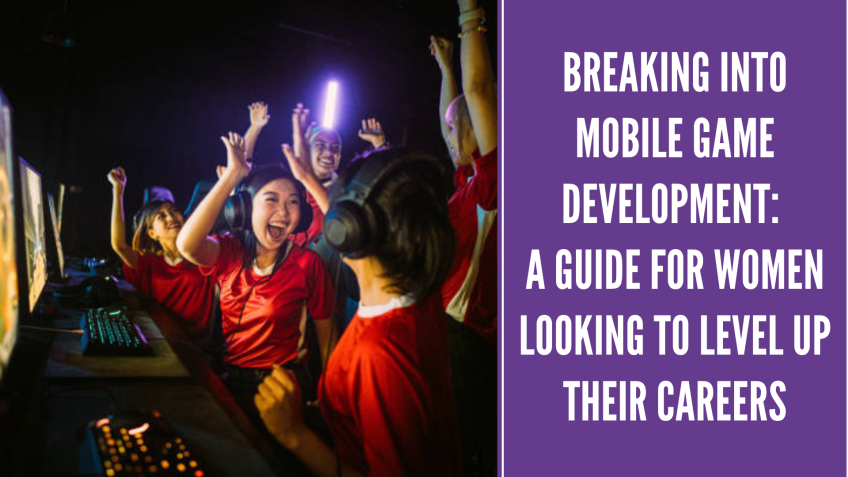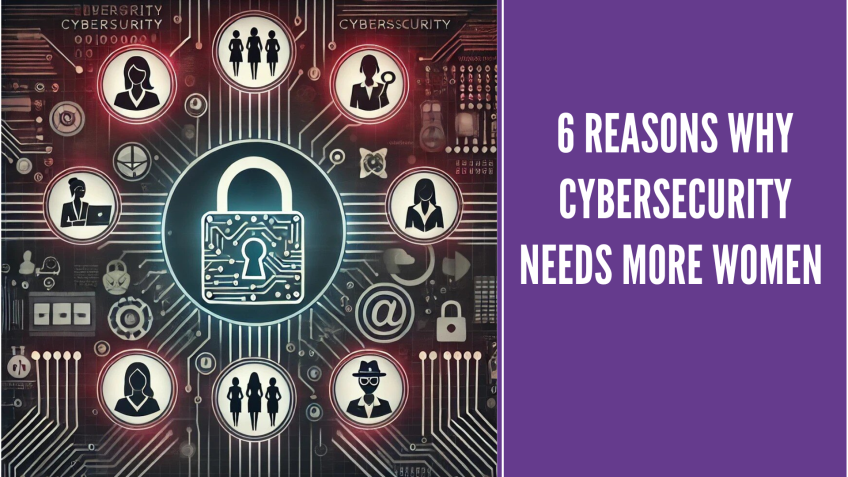Importance of diverse Teams
Alda Zeila
Intelligent Operations Lead for BalticsThe Importance of Gender Diversity in Information Technology
Hello, my name is Al Daze, Intelligent Operations lead for Accenture Baltics. I have dedicated my career of over 20 years to the ever-evolving field of IT, spending the majority of this time – 19 years – working with Accenture.
One question that I'm working to address is: why do we need more diverse teams, particularly women, in IT? This question, rooted in both societal and economic concerns, is fundamental for the continued growth and prosperity of our industry. As such, I am here to share our experience as Accenture Baltics in improving gender diversity ratio within our tech teams – a journey we've embarked on while operating in the not-so-progressive Baltic states such as Latvia.
A Diversity Goal for Accenture in 2017
In 2017, Accenture set an ambitious goal – to achieve 50:50 global gender parity by 2025. Despite local obstacles, I'm proud to report substantial progress, trumping even our Nordic colleagues in more progressive countries.
The Importance and Impact of Building Diverse Teams
A major part of my objective today is to serve as a reminder about the positive impacts of having diverse teams:
- Diverse perspectives lead to innovation: A team with diversity in race, gender, culture and background brings in different ideas and experiences, leading to creative problem-solving approaches.
- It avoids groupthink: With diverse team members, you can avoid scenarios where everyone has the same opinion, thereby identifying blind spots that would otherwise go unnoticed.
- Better understanding of diverse needs: A diverse team is more likely to design products that meet the needs of a diverse user base.
- Innovation stems from different backgrounds: Different skills, experiences, and knowledges lead to unique problem-solving approaches.
- Greater empathy and inclusivity: A diverse team helps create a more supportive and inclusive work environment, leading to increased productivity and engagement.
The Quest for More Women in IT and STEM
Moving onto the topic of gender diversity in the IT industry, it's no secret that the divide is quite wide. A report by the European Commission in 2020 estimated that there could be a shortage of up to 756,000 skilled ICT workers in the European Union by 2025. Combining this estimate with some Latvian-specific figures on gender diversity, it becomes clear there's substantial room for improvement.
The gender diversity landscape in Latvia is still largely dominated by traditional gender roles. ICT and STEM fields only employ 7.3% of all working women, suggesting these professions are still perceived as stereotypically male.
Raising the Bar: Accenture's Approach Towards Gender Equality
As one of the major players in technology, with over 700,000 employees globally and 2000 in Latvia, Accenture is at the forefront of promoting equality within the workforce. Our firm belief is that an equal future workforce starts at the top. We continuously set bold, actionable goals to our aim of achieving a gender-balanced workforce by 2025.
Practical Strategies to Achieve Gender Diversity
At Accenture Baltics, we've developed a four-pronged strategy to attract more women to the IT field:
- Working with schools: Changing the perception of IT among girls to dispel the stereotype that it's a field for "boring" and "nerds."
- Partnering with universities: Encouraging them to focus on diversity among students.
- Reskilling: Providing opportunity for individuals from other fields to switch careers to IT.
- Upskilling: Providing additional training to already existing employees.
While all these strategies have their place in our larger objective, we realized that reskilling was our most direct and quickest avenue towards attracting women into IT. This means attracting women with a can-do attitude and providing them the opportunity to switch their careers to IT.
Conclusion: The Journey Toward More Diversity at Accenture Baltics
The journey towards achieving more diversity at Accenture Baltics is ongoing, and we're proud of the strides we've made so far. With a woman-to-man new hire ratio of almost 52% in the fiscal year 2022, I believe we are well on our way to reaching our diversity goal by 2025.
Addressing gender gaps and ensuring diversity in IT is more than an individual effort. It's a collective responsibility. Together, we can work towards breaking stereotypes and creating a more inclusive IT industry, one where everyone feels welcomed and valued.
Thank you for joining me on this journey towards fostering diversity in our teams. I look forward to witnessing the impact it will have on the evolution of the IT industry.
Video Transcription
Hello, thank you for joining the session on emergency. My name is Al Daze and I'm Intelligent Operations lead for accenture Baltics. I have been working in it for over 20 years.And majority of the time 19 years, I have worked with accenture 1st 10 years in Toronto and the second uh nine years in Riga Latvia. So why do we need more diverse teams and uh particularly why do we need more women in it? This question has many facets, both economic and societal although to some, this seems self evident to others, it is still unfortunately unclear. And for that reason, it is important to continue talking about it today. I would like to share our experience of improving gender diversity ratio at accenture Baltics being part of a large multinational and very progressive global tech company in not so progressive Baltic states, namely in Latvia. Accenture in 2017, set a goal to reach 5050 global gender parity by 2025.
In spite of local obstacles, we have achieved very good results even better than our Nordic colleagues in the more progressive countries. First half of my presentation will serve as a reminder about the benefits of having diverse teams and what impact they make on companies and societies.
In the second half. I will tell you about our journey to more diverse teams. What was done and what were the results when you have a team that is diverse in terms of race, gender, culture and background? You bring in different perspectives and experiences that can lead to a more innovative and creative approach to problem solving, which can result in better products with a diverse team. You can, you are less likely to fall into groupthink where everyone on the same team has the same opinion and biases. A team that has diverse perspectives can identify and address blind spots that could lead to poor decision making. A diverse team can better understand the needs of a diverse user base. For example, a team that includes women and people of color is more likely to design products that meet the needs of those groups. A team that is diverse can come up with more innovative ideas and solutions. When you have people from different backgrounds working together, they bring different skills, experiences, knowledges to the ta knowledge to the table, which can lead to new and unique approaches to problem solving.
A diverse team can have a better understanding and empathy for each other, which can lead to a more supportive and inclusive work environment. When people feel valued, unheard, they are more likely to be more productive and engaged. Caroline CRE Criado Perez in her best selling book, Invisible Women provides a number of excellent examples. How lack of diversity in design teams and decision makers leads to products that discriminate large parts of population. For example, a standard piano keyboard size restricted majority of women for from pursuing professional music careers, military uniforms and bulletproof vests made for male bodies makes them unsafe for women wearing them until 4016. In European Union, it was not required to have cars tested with female body equivalent crash test dummies for, for for ever increasing phone size means that we are not able to be as fast to react in time sensitive situations. All of the above lead to more injuries, less effectiveness and reduced safety and economic disadvantage. Digital design is not much different and is very much influenced by its developers, decision makers and data sets and if these teams are not diverse, then the product they create will also be more focused on the needs of the homogeneous group of their creators.
Again, we see that serious impact exists on effectiveness, safety service, economic activity and overall inclusiveness. Besides the design aspect, there are also some direct benefits to economy on personal and societal levels. In 2020 a report by European Commission estimated that there could be a shortage of up to 756,000 skilled IC T workers in European Union by 2025. There are other reports that provide other estimates. But the understanding is the same the world where almost every company is now a technology company, there is constant shortage of skilled specialists taking this in mind. I would like to combine this argument with reflection on some statistics for Latvia, gender diversity landscape.
Latvia currently is in leading position in European Union when it comes to gender pay gap and also in labor market distribution into male and female sectors, gender roles and stereotypes are very much alive and thriving IC T and STEM employs only 7.3% of all working women. The number is very low and strongly indicates perception that these fields are stereotypically. Male in general, Children do not seem to have any special abilities or disabilities. During primary and high school years, both genders succeed equally in STEM subjects. However, there is a significant difference when it comes to career choices. Only small percentage of female university students major in science or mathematics. As you can see, Latvian gender diversity landscape was not advantageous for us to implement the gender parity. Very few women in it and very few girls ready to study at it or stem more women in STEM would also help reducing the gender pay gap as these jobs come with higher pay and higher flexibility. Women in Latvia work pretty much the same number of hours as men and most of the gender pay gap is directly tied to the level of income. If we have part of the female population work in better paid jobs. Then also gender pay gap would shrink better, better income would um provide also higher economic participation, which in return is good for overall economy. Having looked at some numbers in Latvia locally, uh let's return to accenture diversity approach globally to start a couple words about accenture.
In case this is your first exposure. Accenture is one of the major players in the field of technology, with cross industry expertise, unmatched innovation, wood glass technologies, and talent. And we bring it all together to deliver tangible business outcomes to our clients globally. We have over 700,000 people.
And in Latvia, we are proud to work in a team of almost 2000 people which makes it the largest tech company in the Baltics. Our philosophy is anchored in recognizing that our people are multi multidimensional. We take an intersectional human approach to create a work environment where every one of our 738,000 people feel like they can be the same person both inside and outside of work. Our commitment to accelerating inequality starts at the top with our board and CEO and extends across every part of the company. This comes to life when our people own their quality agenda, making a part of their jobs every decision every day and feel free to speak up and to act. We believe the future workforce is an equal one and set, bold goals to accelerate gender equality. Since 2013, our total workforce has grown by more than two thirds. The number of women has more than doubled from 100 and 10,000 to more than 300,000 today. Excuse me, we have set both goals to achieve a gender balanced workforce by 2025. For those g for those whose gender is binary, we have achieved a goal of having 25% managing directors, women by end of 2020. And now we're working towards uh a higher goal of 30% of all managing directors.
By 2025 we already have achieved women as 47% of our global workforce. 56% of board of director nominees, 29% of managing directors, 50% of new hires and 25% of Global Management Committee. So now you may better understand what I meant at the beginning of our company values in a more traditional local environment. A gender parity goal was applied to all occasions and all levels. The progress was measured extensively. First action was to get 5050 gender mix for all the new hires and then slowly progress over the years to overall head count being 5050. Our starting point in 2017 was 25% women. Operationally, we were very strong at accenture politics as we had grown, very sizable business. In spite of being a very small country, it took some time for our management team to fully accept that the new target, if what the new target is and uh what, what is it all about and why we need it and where can we get all these female candidates as soon as we understood? Um That no excuses will be accepted. We jumped into an action. There are four ways you can get more women in it, work with schools to change the girl's perception of it being boring. And just for nerds have universities focused on diversity among their students. Get people uh from other industries to reskill and upskill existing um people the best would be to work with the school Children to get them to see themselves working in it. But we did not have that much time. We needed female candidates right away.
University approach would also have not worked as quickly as universities, universities in Latvia have their own priorities and student diversity is not really yet. One of them upscaling also would not provide quick results. So our only uh choice was reskilling to attract women with can do attitude and provide them an opportune opportunity to switch their careers to it. Changing mindsets um took enormous amount of work and we could not have done it without having 20 year presence in the market and reputation of being one of the top employers in Latvia. Marketing, worked on implementing inspiration and encouragement campaigns with local Latvian news medium, annually publishing several people's stories and interviews with women in it, organized meetups and excursions to provide more information on what it is like to work in it and what it is it like to work for accenture talent development team with HR worked to flesh out the training programs to lift women with zero it skills to be ready for internships and employment at accenture.
In next slide, I'll provide a bit more detail on these training programs. So the first step was sho tech program that was launched in Cooper operation with riga girls in Latvia and later with women go tech in Lithuania to to provide basic it knowledge in most demanded tech areas, the candidates needed to have the right attitude. English skills, higher education, preferably in stem or economics, finance or business field. Prior skills in programming were not required. Sessions were held in the evenings and covered several introductory topics upon completing the Shos Tech program. Women could apply for the boot camp which is also free of charge intensive full day training for beginners. The bootcamp program, accenture politics have been running for many years as a standard junior recruiting tool to support shos tech candidates. Separate sessions were organized and even programs developed.
The last step in ensuring the success of our women reskilling candidates started after they had completed boot camp and completed the internship with accenture and become fully employed. All hires with no it academic degrees were offered an online it course in collaboration with Latvian and Lithuanian universities.
This program would ensure that besides accenture based training programs, the junior employees also received the benefit of academic education. Ch go tech program run for three months, boot camp, either five weeks, uh full time or five months, evening, part time internship run about 3 to 6 months.
Me meaning that about one year, if successful women would start their career in it, then one more year of work combined with hack, my career academic program would set them up for further success. This program attached a large attracted a large amount of applicants but it was not easy. It was not easy for women to combine work home responsibilities and studies for practically two years. It was not also easy for accenture politics. As you can imagine, it required very focused effort from hr and management team as well as many people contributing their efforts to make this successful. It was also financially demanding. However, we are very proud of the results with this program and also implementing overall more focus on diverse candidates. We have been able to reach almost 52% of new higher ratio in fiscal 22 and with 41.6% gender diversity for our fiscal 22 we are well set to reach the goal by 2025 but the work is not over yet. And it's clear that by ourselves, we can't make it all happen. We are starting to focus more and more on schools and continuing to break the stereotypes of it being a profession just only for men.
Thank you very much for giving me this opportunity to share our journey towards more diversity at accenture Baltics. The more we talk about this, the more it will become a norm and we will all benefit just like I benefited. When at the age of 30 I started working at accenture. After going through my own rescuing journey, I have had a great career. I have been making a very good income and I am very happy to welcome more women into it.






